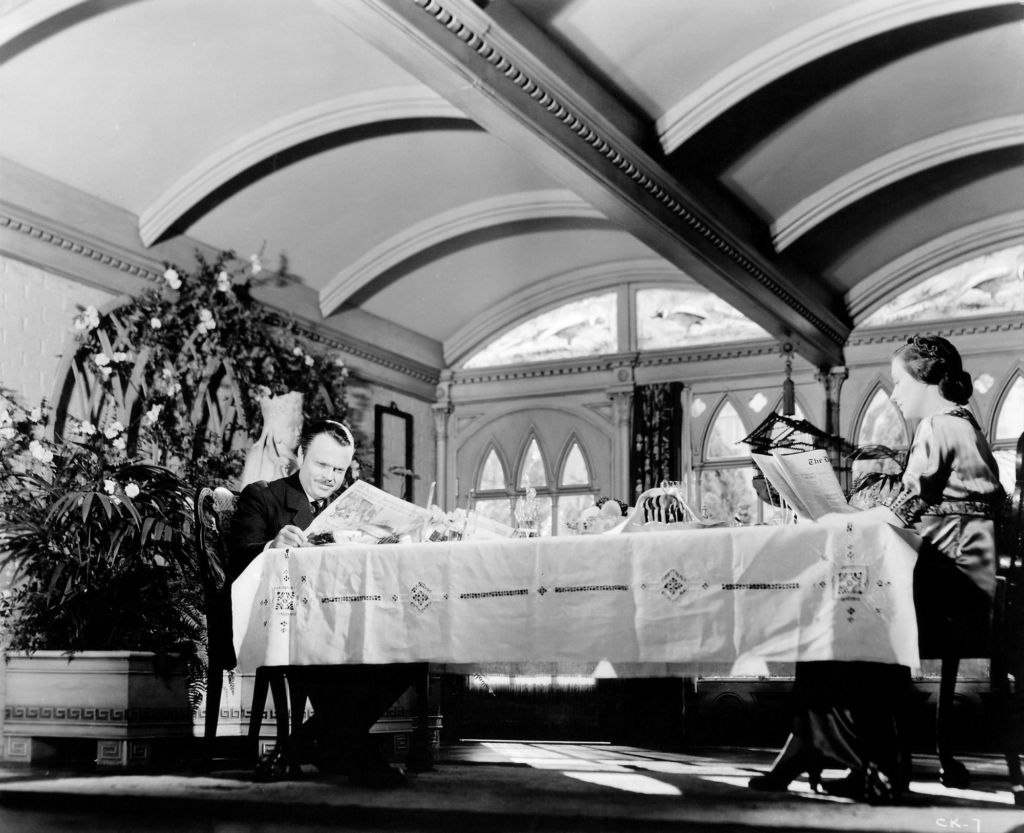Why, in your view do you think Citizen Kane is regularly cited by critics as “the greatest movie ever made”?
Citizen Kane is believed to be “the greatest movie ever made” due to its remarkable cinematography and techniques used, which at the time were not demonstrated in films very often or done well enough in order to make an impact on the audience. The script of the characters and their stories were also enhanced and illuminated by the lighting, deep focus and camera positions used. A number of camera angles and shot lengths were used in order to portray and reveal Kane’s story. The dim and mysterious lighting also played a role in order to show Kane’s true narcissistic and materialistic personality.
Citizen Kane is considered “the best film”, due to the way the plot structure, cinematography and editing were incorporated to form the end product. One shot that was revolutionary and made the film stand out to critics so much was the deep shot of a young Charles playing outside in the snow, while his mother spoke with someone inside the house. The deep focus effect was created in order to form a shot that was easily viewable and clear to the audience, which was rare in Hollywood at the time. The camera movements established by crane shots also inspired other directors for future Hollywood movies to achieve the same effect.

Another scene that stood out to the audience is the beginning scene that shows the death of Charles Kane. Instead of a still camera, his death is portrayed with a fish angle lens shot from the perspective of a snow globe that Kane’s was holding as he passed away. As he passes, Kane drops the snow globe, allowing the audience to see as one of his caretakers finds his body.

Welles told the story of Kane through multiple point-of-view shots and scenes from the people who knew Kane best (such as his previous wife) or were closely working with him giving the viewer insight on those peoples thoughts and perceptions of Kane which ultimately lead to a new type of unique storytelling in filmmaking.
Instead of having long scenes to show the deterioration of Kane’s marriage, a montage of the couple having breakfast is used to show how their marriage becomes worse over time and how they become further apart at the breakfast table symbolising the coldness and distance of their marriage.


